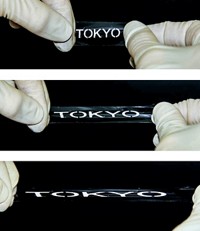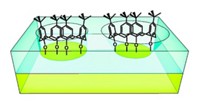Advertisement
Grab your lab coat. Let's get started
Welcome!
Welcome!
Create an account below to get 6 C&EN articles per month, receive newsletters and more - all free.
It seems this is your first time logging in online. Please enter the following information to continue.
As an ACS member you automatically get access to this site. All we need is few more details to create your reading experience.
Not you? Sign in with a different account.
Not you? Sign in with a different account.
ERROR 1
ERROR 1
ERROR 2
ERROR 2
ERROR 2
ERROR 2
ERROR 2
Password and Confirm password must match.
If you have an ACS member number, please enter it here so we can link this account to your membership. (optional)
ERROR 2
ACS values your privacy. By submitting your information, you are gaining access to C&EN and subscribing to our weekly newsletter. We use the information you provide to make your reading experience better, and we will never sell your data to third party members.
Materials
Modeling Nanotube Reactions
Theoretical Chemistry: Approach predicts outcome of nanotube functionalization
by Lauren K. Wolf
May 14, 2012
| A version of this story appeared in
Volume 90, Issue 20

Using molecular dynamics simulations and reaction modeling, researchers at MIT have predicted the extent of a reaction to functionalize carbon nanotubes (J. Am. Chem. Soc., DOI: 10.1021/ja301635e). Their approach should help scientists optimally modify nanotubes with chemical groups for integration into electronic devices and sensors.
“The problem with carbon nanotubes is that they are water insoluble,” says Daniel Blankschtein, one of the MIT team leaders. As a result, scientists often disperse them in aqueous solutions with surfactants.
When researchers run chemical reactions on nanotube surfaces, “the elephant in the room” is that “you’re actually doing chemistry through a surfactant-adsorbed layer,” says Michael S. Strano, team coleader. Previous experiments and models of nanotube functionalization haven’t fully addressed this coating, he adds.
By comparing their computational data with experimental data, however, Blankschtein, Strano, and coworkers have closely examined the covalent binding of an aryl diazonium salt to single-walled carbon nanotubes decorated with various surfactants. Diazonium salts are promising, tailorable reagents for nanotube functionalization. Surfactants play a big role in controlling both the selectivity and extent of reaction, the researchers found.
The team showed that, depending on their charge, the surfactants’ head groups create “hot” or “cold” spots on the nanotubes’ surfaces that either attract or repel the diazonium cations. Nanotubes decorated with the positively charged surfactant cetyltrimethylammonium bromide (CTAB), for instance, have cold spots and a low binding affinity for diazonium cations.
Surfactant flexibility also affects the reaction. For example, even though sodium cholate is negatively charged, the rigid surfactant packs tightly on the nanotubes and severely limits the number of diazonium cations that ultimately bind.
“To controllably functionalize nanotubes is very important,” says James M. Tour, a chemist at Rice University. “We’ve yet to see how generalized this approach will be in the hands of others, but the authors did a good job of showing its efficacy in the cases tested.”
Strano tells C&EN the team is particularly interested in next extending its method to materials such as graphene.





Join the conversation
Contact the reporter
Submit a Letter to the Editor for publication
Engage with us on Twitter